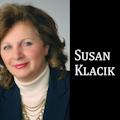The last time the ANSI/AAMI ST79, Comprehensive guide to steam sterilization and sterility assurance in health care facilities, was updated was in 2013. Since that time, the standard underwent a major review for changes to the format presentation and content, and an updated version is now available.
A review of the format determined the document had some disjointed areas (users expressed concern they sometimes found it difficult to locate the information they were seeking in the document. Also, the directives were mixed in with rationales, and some redundancies were identified). A committee was formed to reorganize the document’s formatting to make it easier to locate directives. Perhaps the most helpful reorganization is that directives are now structured with stem sentences, followed by bullet points, as the following example demonstrates:
Gross soil should be removed as soon as possible to:
- Reduce the number of microorganisms on the item;
- Reduce the nutrient material that may support microbial growth;
- Prevent it from drying on;
- Reduce the potential for environmental contamination by aerosolization or spillage;
- Remove all disposables including disposable sharps; and
- Minimize corrosion risk and damage to devices from such substances as blood, saline, iodine and radiological dyes, or from the subsequent vigorous cleaning processes needed to remove encrusted material.
User-friendly focus
Under the document reorganization, chapters were modified to better narrow the subject matter. For example, in the previous edition of ANSI/AAMI ST79, Chapter 8 included four processes under one chapter (packaging, preparation, sterilization and transport). Each of these topics is now in a standalone chapter, which makes it easier to locate the information for each. Among the biggest updates in this revised document is the removal of the environmental recommendations specifying the temperature and humidity for areas within the processing areas.
The Association for the Advancement of Medical Instrumentation (AAMI), the Association of periOperative Registered Nurses (AORN) and the International Association of Healthcare Central Service Materiel Management (IAHCSMM) worked with the American Society of Heating, Refrigerating and Air-Conditioning Engineers (ASHREA) to develop attainable environmental controls that promote personnel comfort and help make it clinically safe to process medical devices. Regulating environmental conditions is complex. The recommendation change states that users should work with their facility’s Engineering department to establish policies and procedures for monitoring and maintaining the heating, ventilation and air conditioning (HVAC) system. The environmental parameters will be in a version of ASHREA 170, based on when the system was installed or upgraded (this is a document held by the Facilities Management department). The sterile processing area is a critical area; being outside the recommended environmental range by a small variance for a brief period of time may or may not have clinical significance; therefore, a multidisciplinary risk assessment should be performed to determine the correct response to any situation where environmental conditions fall outside the recommended range.
The cleaning process (the most important part of instrument reprocessing) now is addressed in its own chapter, and this chapter now features additional information about the use of automated cleaning equipment. For example, recommendations are now included on the preparation and loading medical devices for automated equipment processing, such as ultrasonic cleaners and washer-disinfectors. Cleaning verification recommendations were also added regarding documentation of cleaning equipment performance, process verification and testing automated cleaning equipment each day it is in use. Annex D, which addresses cleaning verifications, was revised to accommodate the latest cleaning verification methods.
The sterilization chapter was revised to include recommendations on sterilizer loading and unloading. In this updated version of ANSI/AAMI ST79, tables for time and temperature for both gravity displacement and dynamic air removal were removed to encourage the use of sterilization instructions for use (IFU) and discourage use of “unwrapped cycles.” The routine biological monitoring process challenge device (PCD) or test pack for immediate-use steam sterilizers now falls under the same testing methods as for routine biological monitoring of sterilizers larger than two cubic feet. In previous versions of ANSI/AAMI ST79, sterilizers used for immediate-use steam sterilization (IUSS) required a different type of PCD than the PCD used for the sterilizers in the Central Service (CS) department. This change was based on the way sterilization was historically performed in surgery. With the enactment of IUSS, however, the sterilization cycles used in surgery are the same as those used in CS; therefore, the sterilization challenge is the same.
New annexes added
Two Annexes, P and Q, were added to the updated ANSI/AAMI ST79. Annex P, Cleaning and disinfection/general considerations, provides information on cleaning and includes a discussion on thermal disinfection (an intermediate step in the processing of medical devices that occurs after cleaning in the washer-disinfector. This process renders instruments safe to handle by personnel not wearing protective attire). This annex details how effective cleaning is a multi-step process that relies on several elements: water quality; concentration and type of detergent or enzymatic cleaner; washing method; rinsing and drying; preparation of items to be processed by cleaning equipment; time and temperature parameters, and load capacity of the equipment; and operator and equipment performance. Annex P also provides information on the basic types of mechanical cleaners available and how they are used.
Annex Q, Alternatives for keeping cool in the sterile processing environment, provides methods for maintaining personnel comfort while wearing personal protective equipment (PPE) and working in the decontamination area.
ANSI/AAMI ST79 is a very important standard and reference document. It provides the recommended practices for CS functions and can prove very helpful when developing and revising policies and procedures; therefore, facilities should ensure their sterile processing professionals have the updated version readily available and accessible. This document may be purchased at www.aami.org.
Note: ANSI/AAMI ST79 is no longer under continuous revision and has been placed back on the five-year revision cycle.
About the Author

Susan Klacik
Susan Klacik is a Clinical Educator for The International Association of Healthcare Central Service Materiel Management (IAHCSMM). She is the IAHCSMM voting member for the Association of the Advancement of Medical Instrumentation (AAMI), a role she has held since 1997. A member of the Association of perioperative Registered Nurses (AORN) Guidance Advisory Board. Klacik has authored numerous articles and served as a contributing author to the IAHCSMM textbooks. She is the author of the IAHCSMM magazine’s column “Inside Washington” and the OR Manager column “Sterilization and Infection Prevention”. She has spoken domestically and internationally on sterile processing related subject matters as well as webinar presentations.
